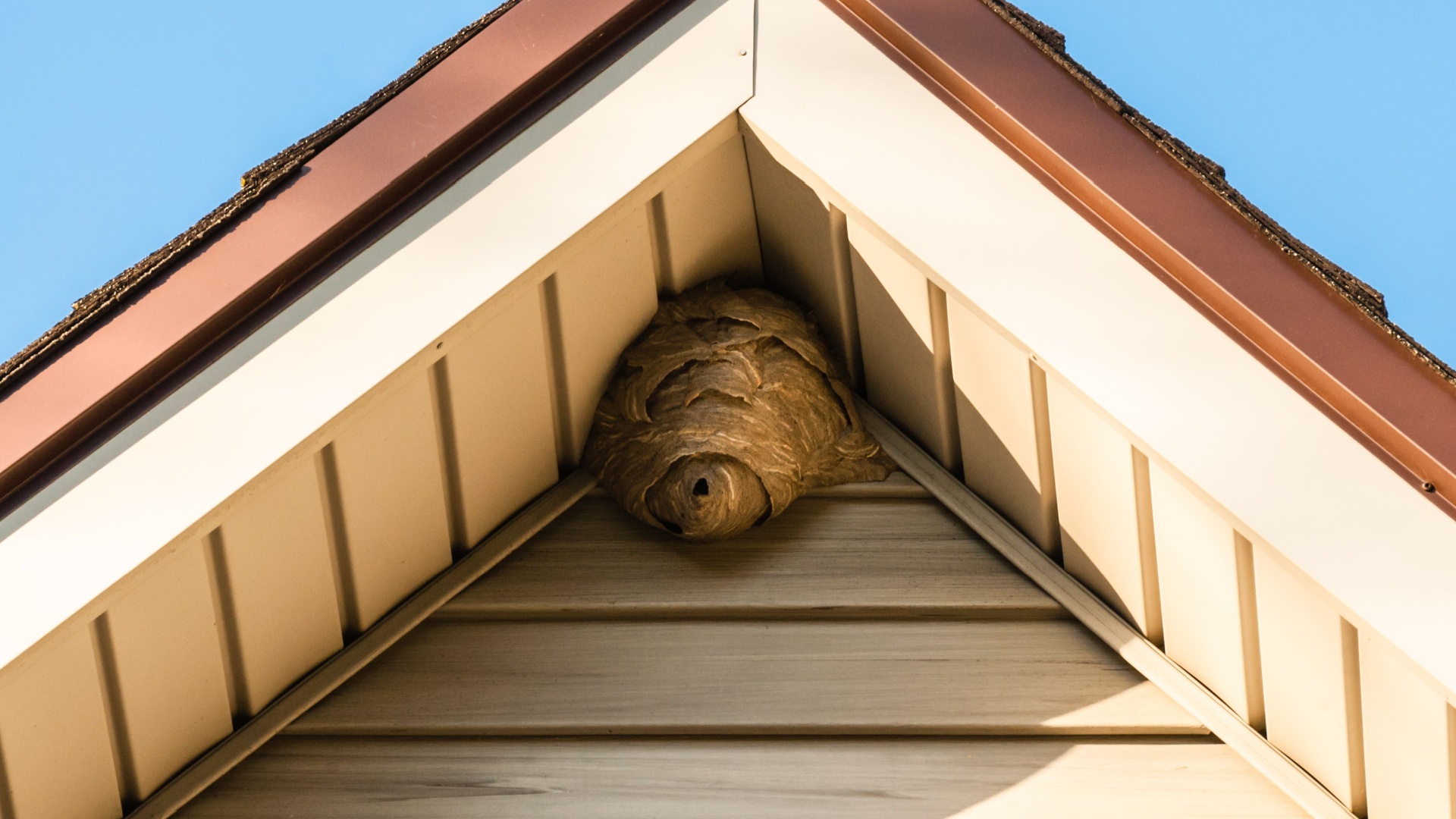We’ve all been there: your home feels peaceful until you hear the unmistakable buzz coming from behind the walls.
Whether it’s a small swarm or a growing colony, having bees in your walls can be a real headache. Especially when you’re trying to avoid the ‘ouch factor’ of an unexpected sting while binge-watching your favorite show.
But don’t panic! There are plenty of ways to handle the situation safely and effectively, without harming the bees. From clever DIY tricks to expert tips, we’ve got you covered with the best solutions to keep your space bee-free.
Ready to take control and say goodbye to the buzz? Keep reading!
1. Call a Professional
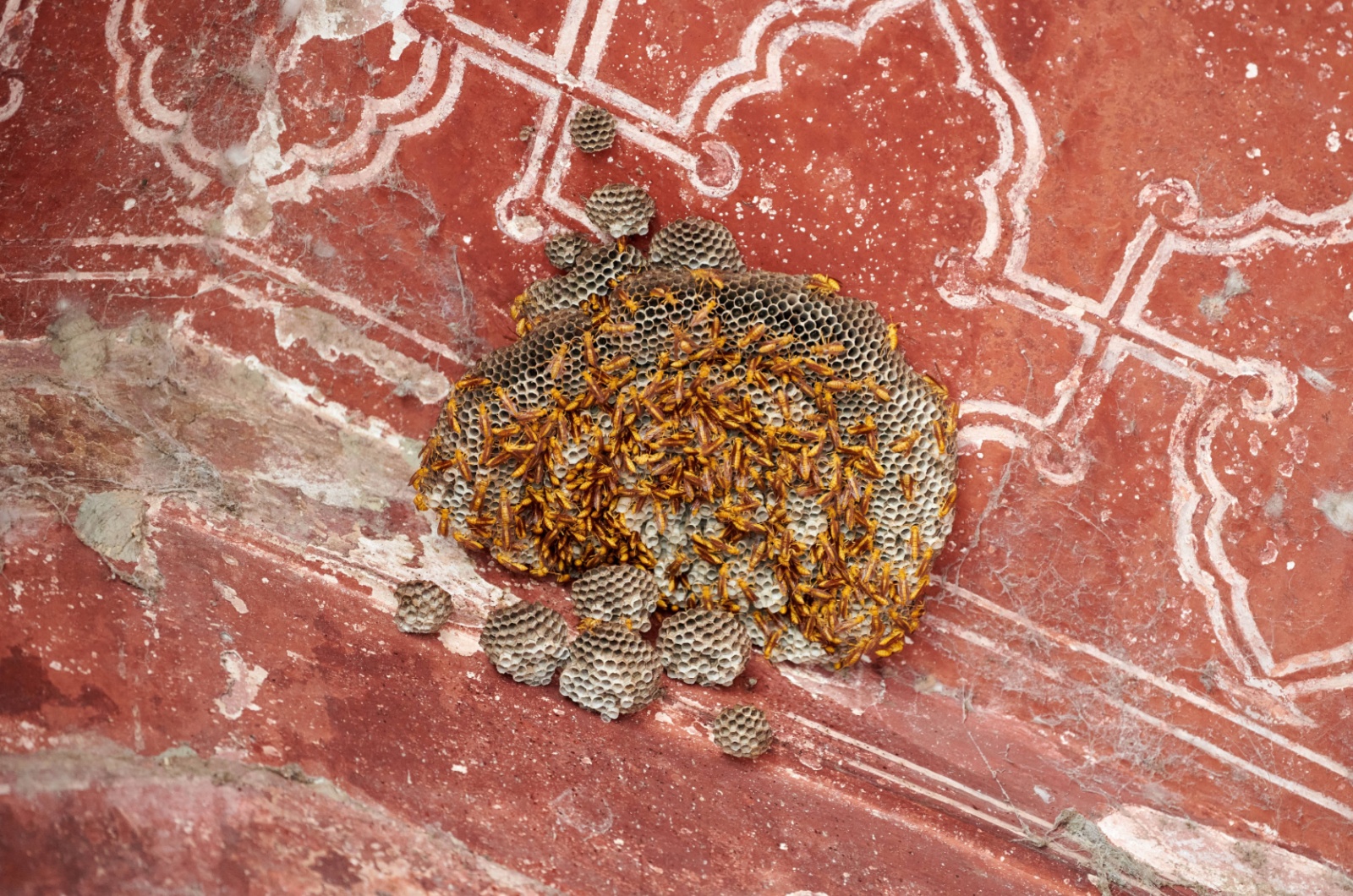
Let’s be honest: when it comes to bees, calling a pro is the ‘duh’ solution. They’ve got the gear, the skills, and the nerves of steel you might lack when faced with a buzzing wall of chaos.
The best part? They ensure that no harm comes to the bees, which are important pollinators. A professional will assess the situation, locate the hive, and carefully handle the removal process, all while making sure you’re safe.
Hiring a professional also saves you the hassle and risk of dealing with a potentially aggressive swarm on your own. It’s the most stress-free option, and you’ll know the bees are safely relocated.
While it may cost a bit more, it’s a great investment in making sure your bee problem is handled safely and efficiently.
2. Use Bee Repellent Spray
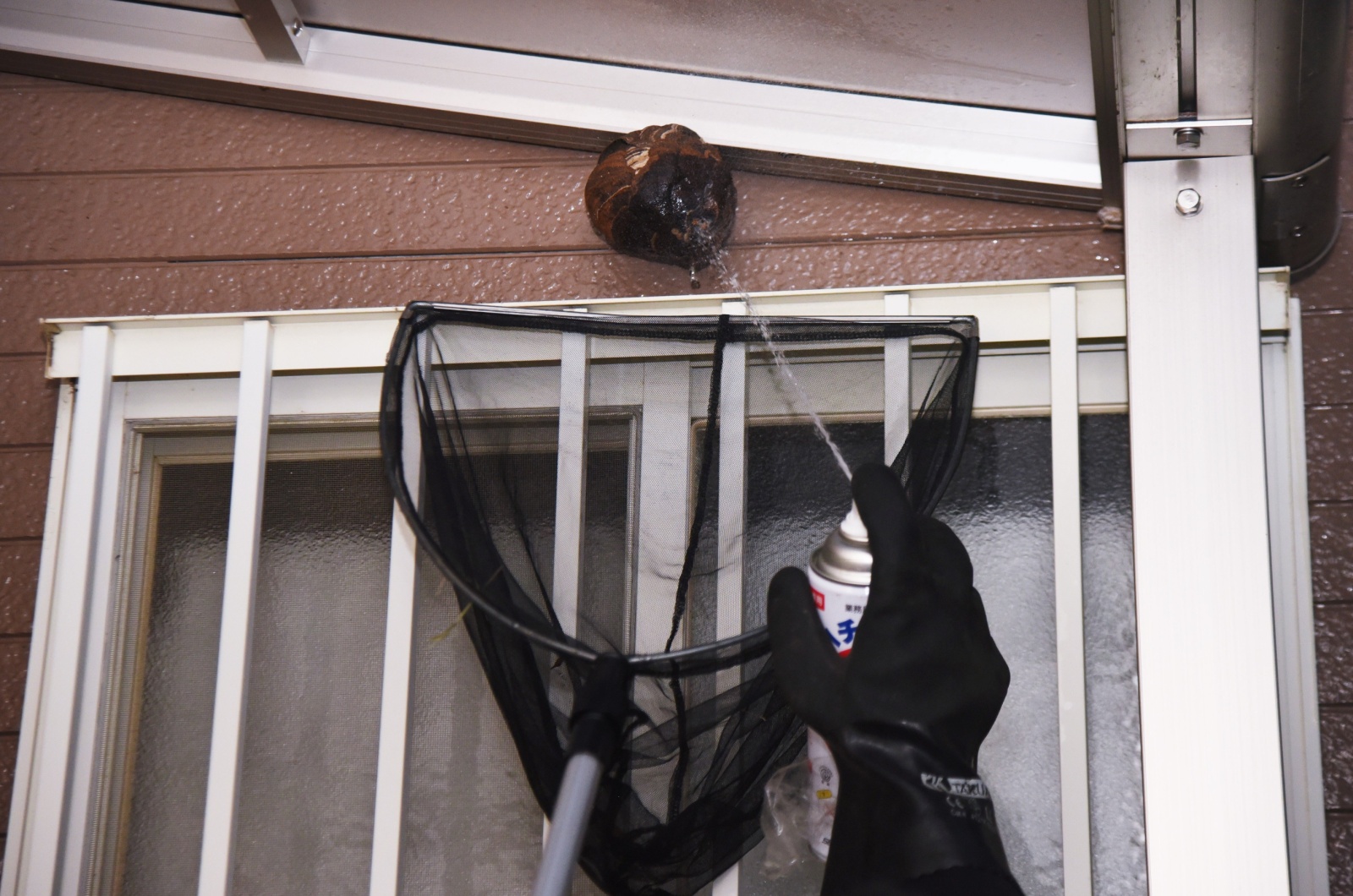
If you’re looking for a quick solution, bee repellent sprays can do the trick. These sprays are designed to deter bees from sticking around, and they work quickly in most cases.
The key is to spray the areas where bees are entering your walls or around the hive’s location. While the repellent might not completely remove the hive, it will discourage the bees from sticking around.
Many sprays are natural and eco-friendly, so they won’t harm the bees or the environment. Because even when you’re playing defense, you can still be kind.
However, it’s important to remember that this method might only provide temporary relief.
For a more long-term solution, you may still need to remove the hive or seal the entry points. Plus, it buys you some time to plan your next move without constant buzzing drama!
3. Create a Bee Trap
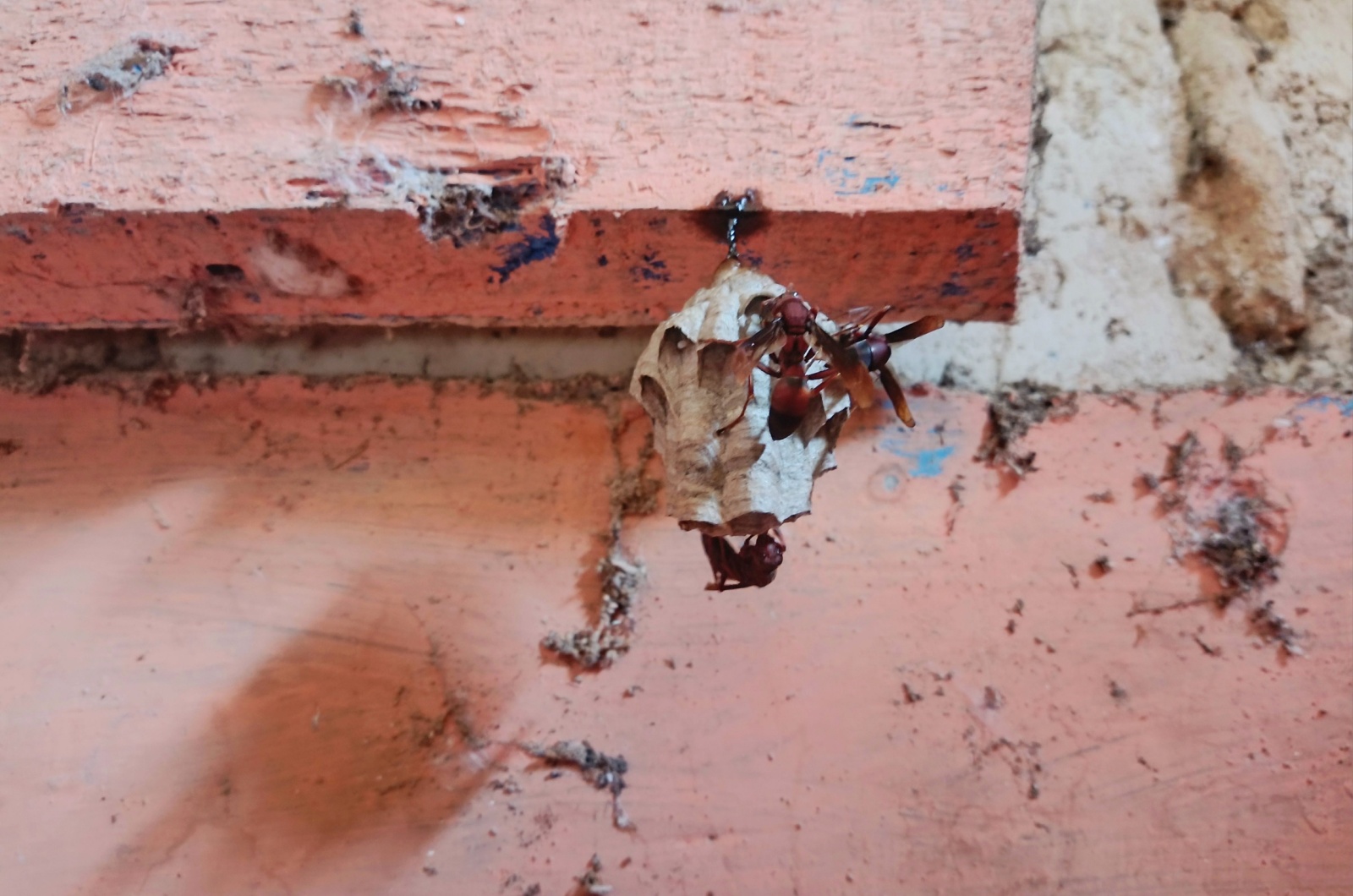
For those who are into DIY, creating a bee trap can help reduce the number of bees around your home.
To make your own trap, take a plastic bottle and cut it in half. Fill the bottom with a sweet bait like sugar water or fruit, then invert the top part of the bottle back into the bottom part to create a funnel.
Place the trap near the hive, and the bees will be attracted to the bait. Once inside, they’ll have trouble getting out.
It’s a simple and effective way to trap some of the bees, but it’s not a permanent fix. Just remember, the bees won’t be thrilled about this, so approach the trap with a mix of caution and a good sprinting strategy
This method works great if you’re dealing with a few overly curious bees, but for a full hive? Let’s just say you’ll need a lot more bottles.
4. Essential Oils
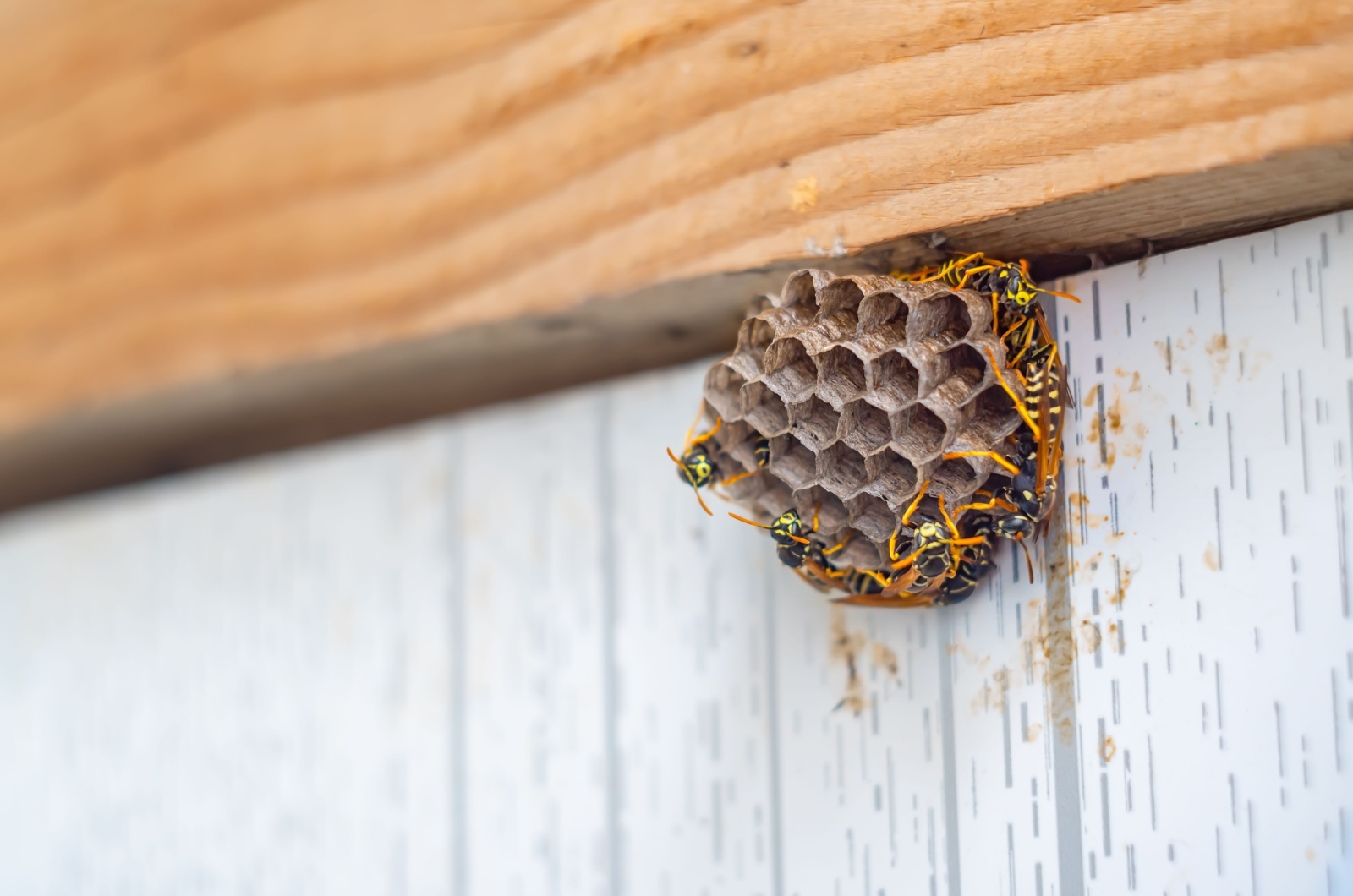
Turns out, bees have fancy noses and aren’t fans of strong scents. Time to put those essential oils to work, not just for your stress relief, but for bee eviction too!
Simply mix a few drops of essential oil with water in a spray bottle and spray it around the areas where bees are entering or near the hive. The strong smell will irritate the bees, making them less likely to return to your walls.
While it won’t remove the hive itself, using essential oils can help push the bees to move on to a less smelly location.
5. Baby Powder

A unique, but effective solution for removing bees is using baby powder. Bees have sensitive senses, and when you blow baby powder into the cracks or crevices where they’re entering, it disrupts their ability to fly.
This makes it harder for them to navigate and encourages them to leave.
To use this method, carefully apply baby powder to the areas where you’ve seen bees and near their entry points. Be sure to wear gloves and take precautions not to harm the bees.
But be careful, I warned you! Otherwise, you might end up with a wall full of angry, powdered bees staging a buzzing protest you definitely won’t forget.
6. Cut a Small Opening
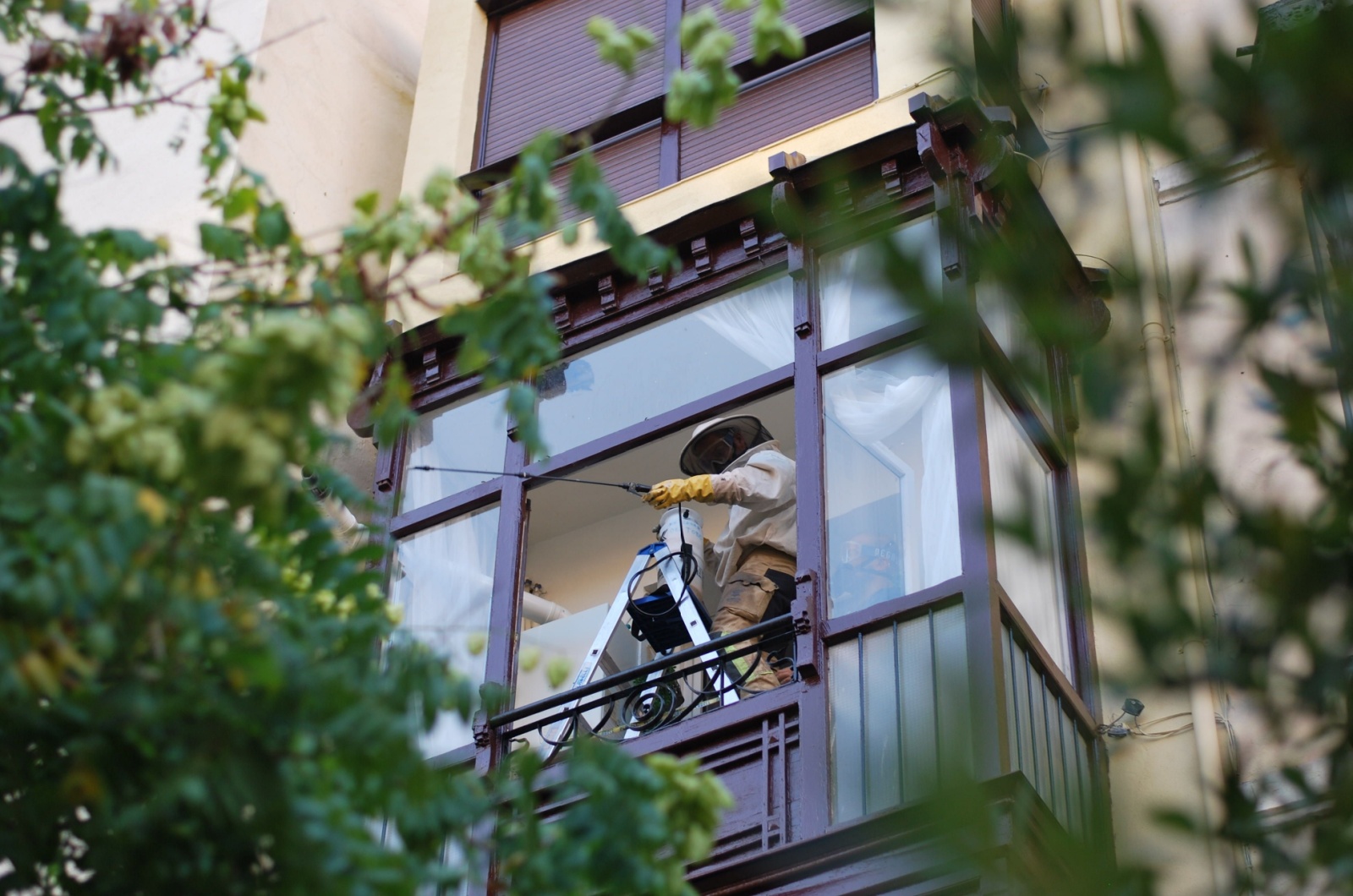
For a more direct approach, you could consider cutting a small opening in your wall to access the hive and remove it. This method is definitely more invasive, but hey, sometimes you’ve got to go full DIY hero!
First, gear up like a pro with a bee suit and gloves. Once you’ve located the hive inside the wall, carefully cut a small hole to remove the bees. You can then choose to relocate the hive yourself (bonus points for bravery!) or call a professional to finish the job.
Just proceed with caution, disturbed bees aren’t exactly known for their calm demeanor, and you don’t want to find yourself at the center of a high-speed chase with the hive’s residents.
While this method provides a permanent solution, it definitely calls for steady hands, some preparation, and a good sense of humor about home repairs.
7. Bee Vacuum
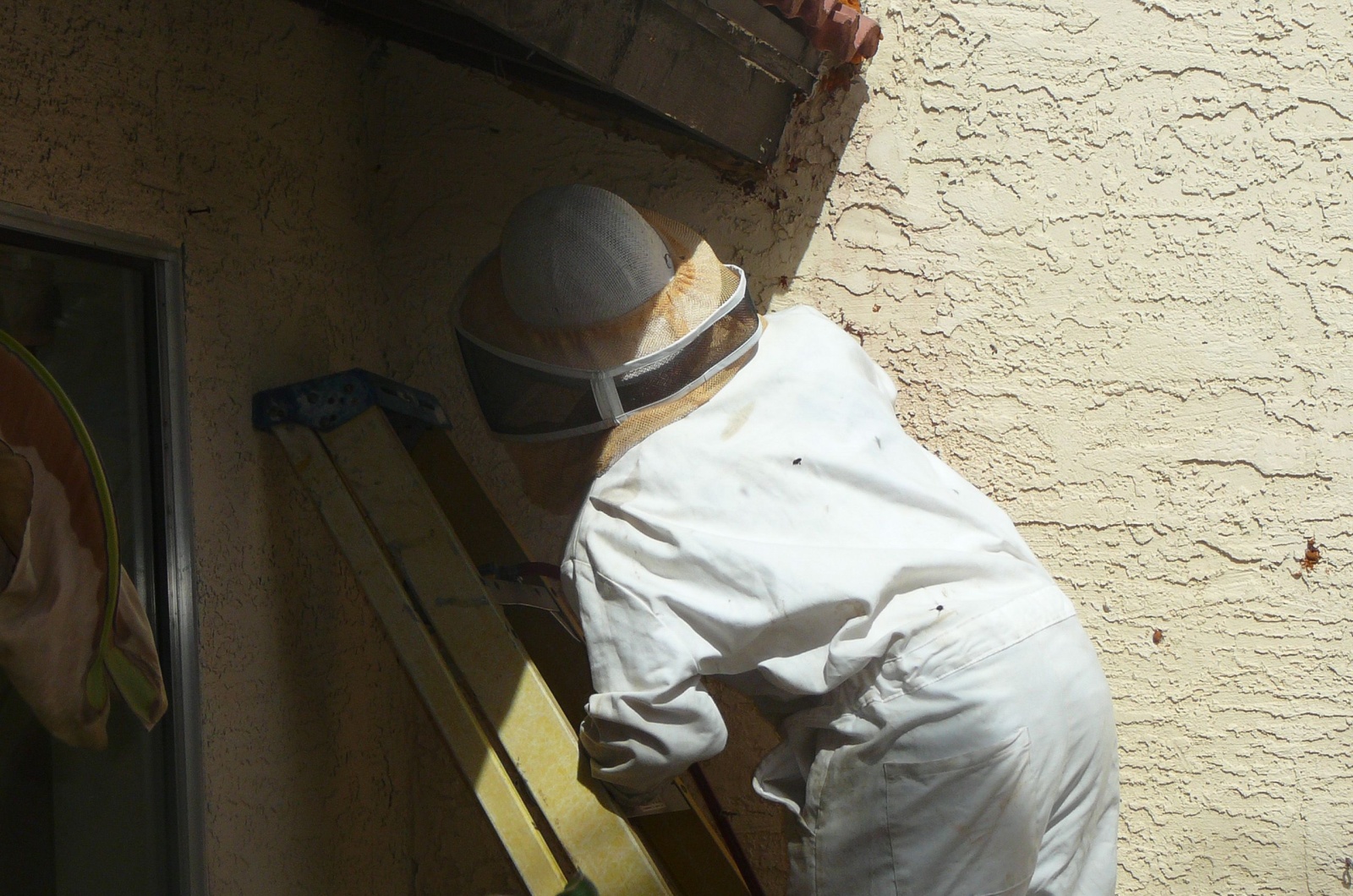
A bee vacuum is a unique and gentle method to remove bees from your walls. This specially designed vacuum allows you to suck the bees up into a container without harming them.
Bee vacuums are equipped with soft hoses that collect them in a removable container for relocation. It’s a humane way to clear out a small swarm without having to destroy the hive or harm the bees.
While this method requires a bit of expertise to ensure you don’t harm the bees or cause them to become aggressive, it’s one of the most effective solutions for a safe removal.
Once you’ve got them safely collected, you can proudly announce you’ve become a real estate agent for bees. After that, you can relocate them to a safer place.
8. Use Smoke
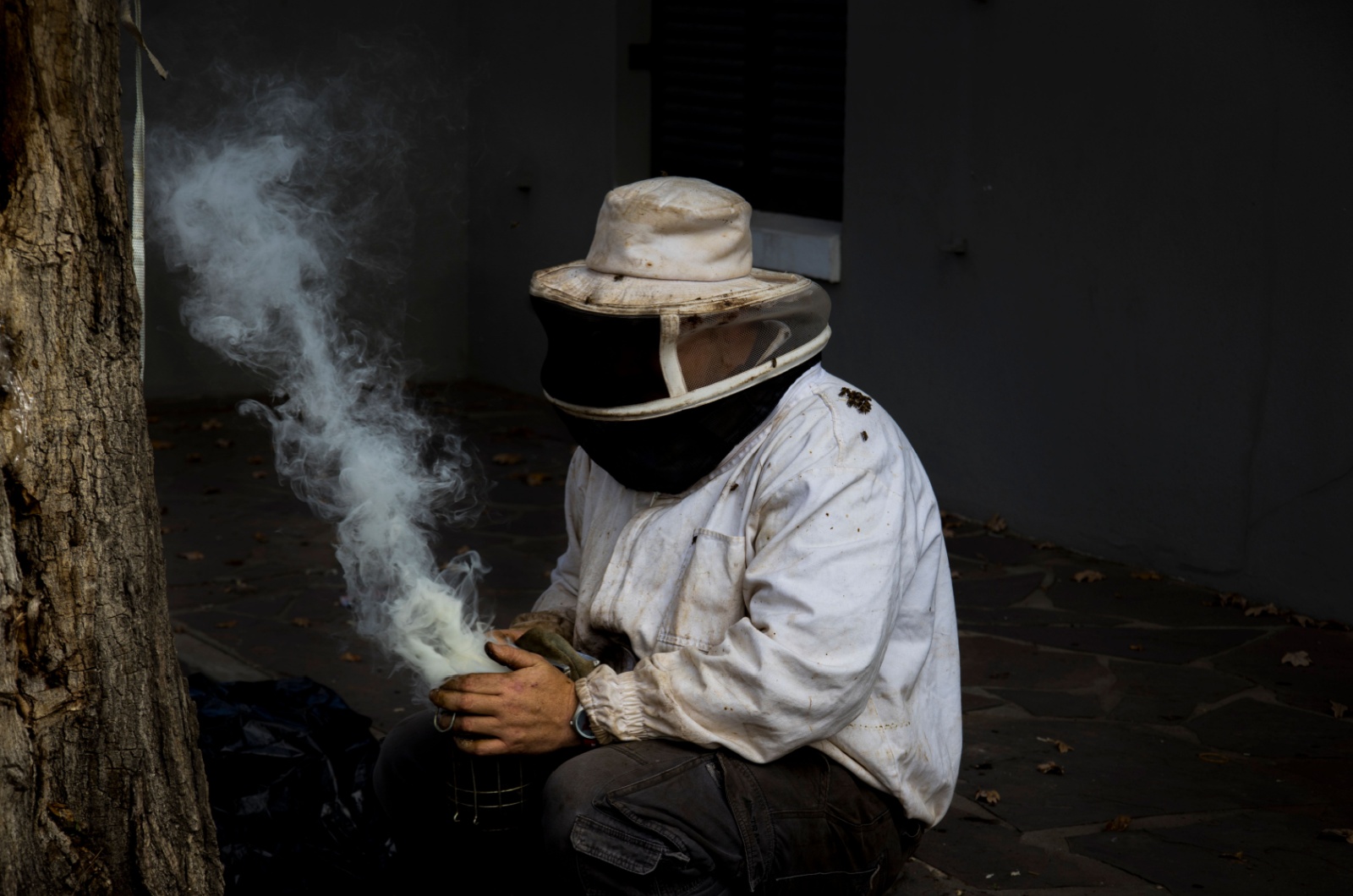
If you’re looking for a natural and budget-friendly way to encourage bees to pack up and leave your walls, smoke can be surprisingly effective. Bees respond to smoke like humans respond to a fire drill: calm at first, but ready to relocate if things get serious.
The smoke mimics the presence of a wildfire, triggering their instinct to protect the hive rather than attack.
To try this method, you’ll need a smoker, which you can grab from a local bee supply store or order online. Carefully aim the smoke near the hive entrance or through any cracks where the bees are coming and going.
The smoke will encourage them to leave without causing harm to the colony. Once they’ve vacated, you can safely remove the hive and seal up entry points to prevent future invasions.
9. Seal Entry Points
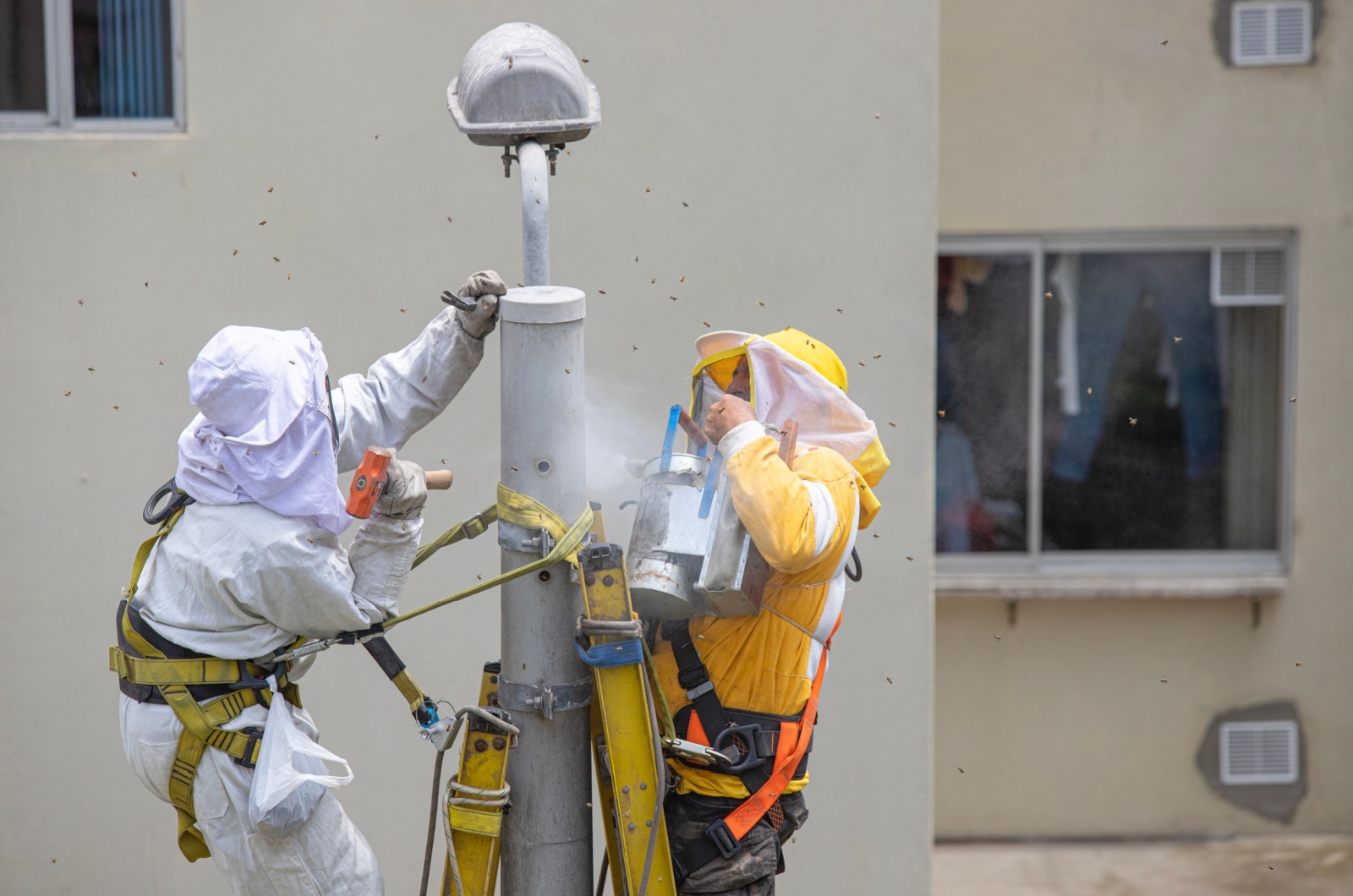
Once you’ve gotten rid of the bees, the next important step is to seal off their entry points to prevent them from returning.
Bees often find small cracks and gaps in walls, windows, or foundations, and these become their pathway into your home.
Inspect your property for any possible openings, and seal them up with caulk or weatherproofing materials. By blocking these entry points, you’ll make it harder for new bees to find their way inside.
This is a crucial step in preventing future bee problems, as bees will seek out any small opening they can find. Think of it as bee-proofing your home
Seal those entry points only after the bees have vacated, or you might accidentally create a buzzing fortress inside your walls. And trust us, no one wants that kind of drama.

